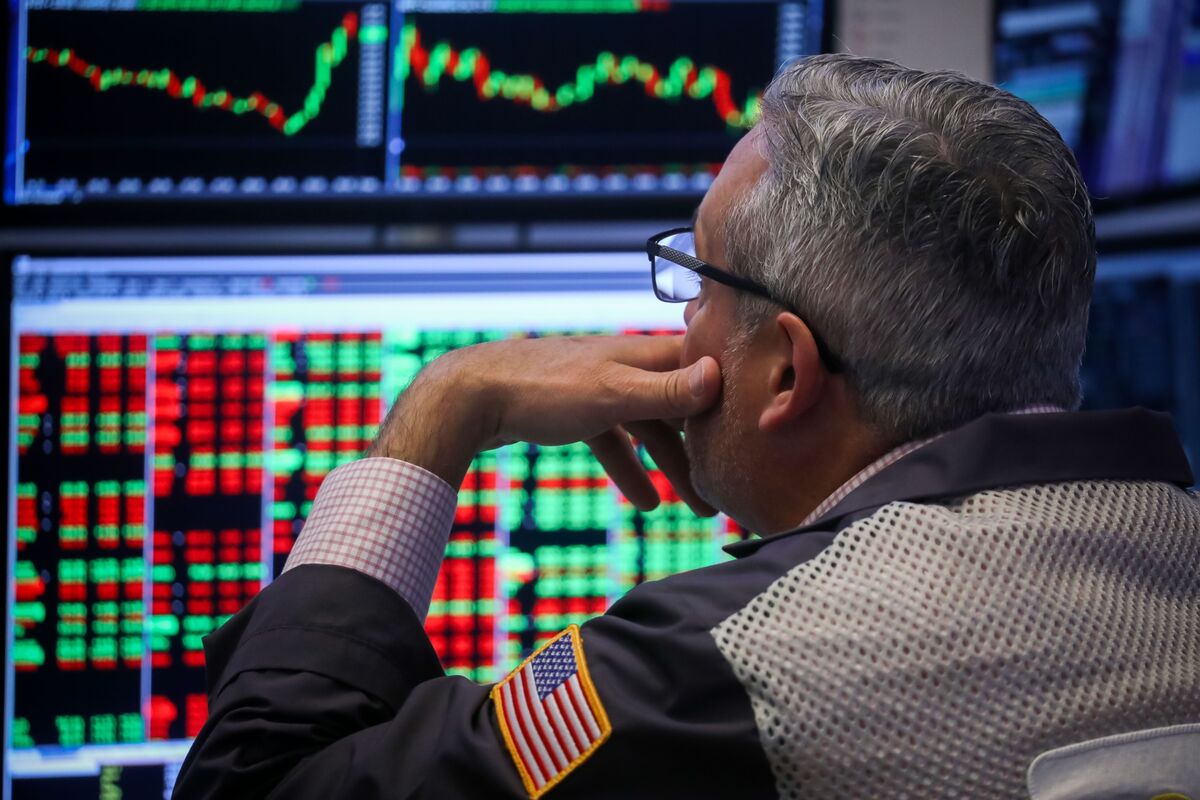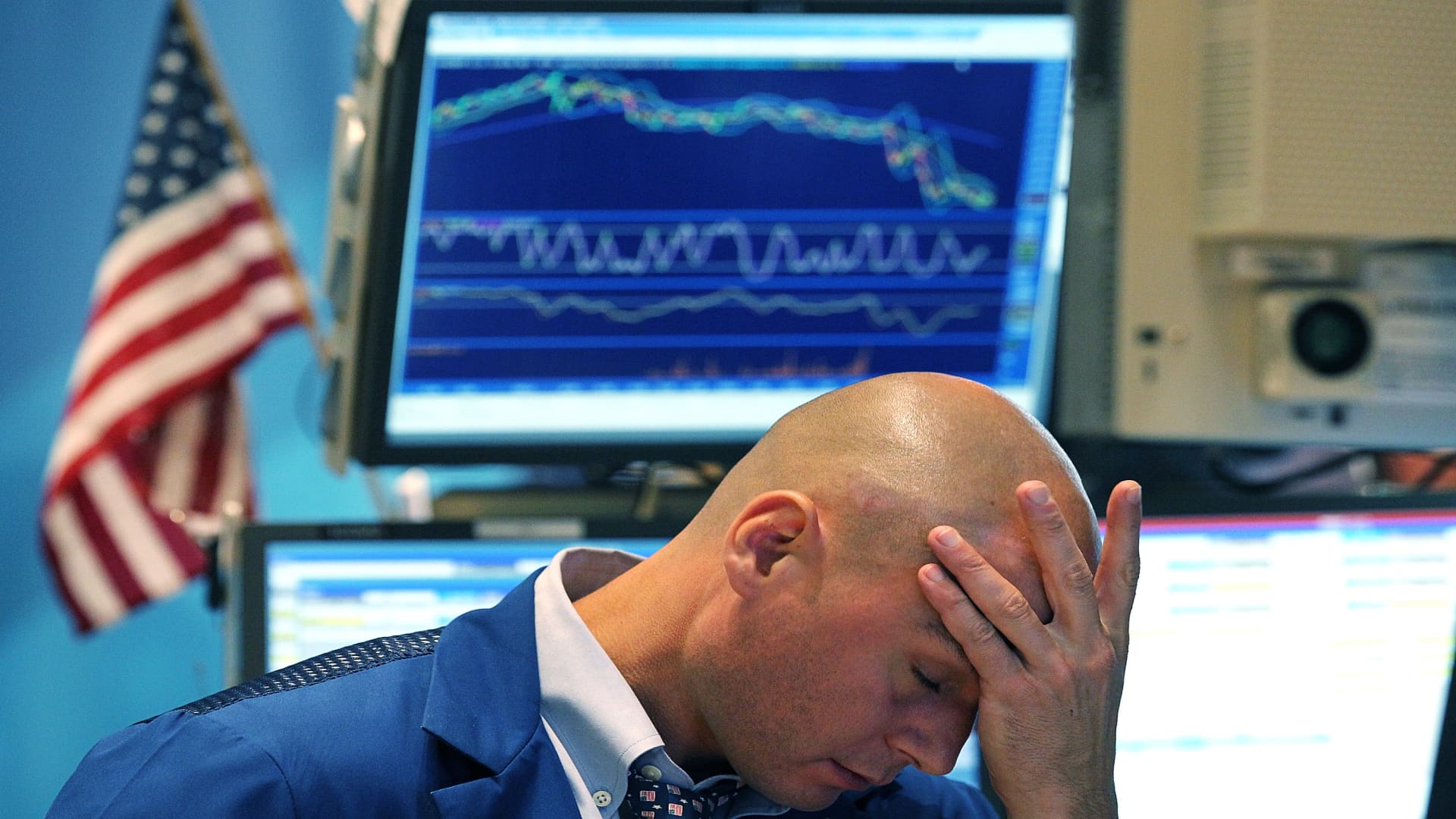- Nvidia CEO wants TSMC to boost chip supplies amid strong AI demand Seeking Alpha
- Nvidia CEO Asks TSMC for More Wafers to Meet Strong AI Demand Bloomberg.com
- The obstacles to Jensen Huang’s AI doctrine Punchbowl News
- TSMC ramps 3 nm production in Taiwan to 160K wafers/month for Nvidia CryptoRank
- Nvidia CEO deepens ties with TSMC with third visit in three months Nikkei Asia
Category: 3. Business
-
Nvidia CEO wants TSMC to boost chip supplies amid strong AI demand – Seeking Alpha
-

WBCSD Launches Emissions Reduction Accelerator (ERA) and value chain pilots at COP30 to drive business action
- WBCSD launches the Emissions Reduction Accelerator (ERA), a new platform to mobilize business-led, value chain decarbonization at scale.
- ERA pilots will target high-impact interventions for green fertilizers and net zero built assets.
- The business case: ERA’s value chain approach to decarbonization can lower costs, boost resilience, unlock new markets, and strengthen stakeholder trust.
- A Sao Paolo roundtable convened senior executives to endorse ERA, commit to pilot engagement, and shape collective action.
- WBCSD calls on members and forward-looking businesses to engage and help close the emissions gap by 2030.
Sao Paolo, 8 November 2025: The World Business Council for Sustainable Development (WBCSD) has launched its Emissions Reduction Accelerator (ERA), an accelerator designed to mobilize collective business action and unlock value chain decarbonization at scale. ERA was formally introduced as part of the build up to COP30, with the announcement of two flagship value chain pilots focused on scaling emissions reduction in agriculture and the built environment.
A strong business case for value chain decarbonization
ERA is not just a climate imperative – it is a business opportunity. According to a report co-authored by WBCSD and EY, WBCSD members and their value chains account for as much as 15.05 Gt CO₂e (89% of which are Scope 3) – approximately a quarter of annual global greenhouse gas emissions. By focusing on value chain (Scope 3) emissions, companies can address their largest climate impact, while also unlocking tangible business benefits: lower operational costs, enhanced supply chain resilience, improved stakeholder trust, access to new markets, and a lower cost of capital.
Decarbonizing value chains is increasingly demanded by regulators, investors, and customers, and companies that lead will be best positioned for growth and competitiveness.
Two value chain pilots:
Lowering emissions from fertilizer production and use, and net-zero commercial real estate assets
ERA’s initial pilots will target two of the highest-impact value chains: agriculture and the built environment.
The first pilot will focus on lowering emissions from fertilizers, a major source of GHGs in the agri-food value chain. By mapping and engaging all relevant actors – from input providers to farmers to food brands – the pilot will test and scale solutions such as green fertilizers and improved use efficiency, with the potential for global spillover.
The second pilot will address the supply and demand for net zero asset buildings. With the built environment responsible for a significant share of global emissions, this pilot will bring together owners, occupiers, solution providers, and financiers to overcome barriers to retrofitting and decarbonizing real estate assets, including manufacturing facilities, logistics hubs, offices, and data centers.
Sao Paolo high level ERA Roundtable:
A launch moment for collective action
In the lead-up to COP30, WBCSD convened a roundtable in Sao Paolo, bringing together senior business executives from member companies, partners, and invited guests. The session showcased ERA as WBCSD’s platform to accelerate value-chain decarbonization and unlock business value. Key insights from the WBCSD–EY analysis and value-chain mapping by McKinsey were presented, demonstrating clear implementation pathways for the pilots.
Key outcomes:
- Broad endorsement: Participants expressed strong support for ERA’s collaborative approach, recognizing the need for collective action to address scope 3 emissions and unlock business value.
- Pilot engagement: Several companies and partners committed to engaging in the 2026 pilots, contributing expertise and resources to shape the design and implementation of interventions.
- Enabling Conditions: The discussion highlighted the critical role of data, standards, finance, policy, and technology – including AI – in enabling and accelerating emissions reduction across complex value chains.
- Next Steps: WBCSD invited all interested stakeholders to participate in the pilot design phase and contribute to shaping ERA.
A call to action
The next five years must be the years of decisive action to reduce greenhouse gas emissions and avoid the most catastrophic impacts of climate change. This is why accelerating emissions reduction has become a priority focus for WBCSD. We are entering a transformative era shaped by the rapid development of artificial intelligence. These two forces – decarbonization and digitalization – are converging. Acted on consciously and collectively, they can reshape competitiveness, innovation, and impact. Done well, decarbonizing business value chains lowers costs, enhances resilience, mitigates risks, and unlocks new opportunities for growth and investment for all. Climate leadership today must go beyond commitments – no company can reach net zero alone. Collective mobilization across value chains is essential.
– Peter Bakker, President and CEO, WBCSD
ERA is a platform built by business, for business. By engaging with ERA, companies can not only accelerate their own decarbonization journeys but also strengthen their competitiveness, resilience, and long-term value. I invite all WBCSD members and forward-looking businesses everywhere: join us, help design and deliver the ERA pilots, and be part of the business-led transformation that will define the next decade. Together, we can turn ambition into action and deliver real impact for climate and for business.
– Dominic Waughray, Executive Vice President, WBCSD
WBCSD calls on all companies, partners, and stakeholders to join the Emissions Reduction Accelerator and help deliver the business-led solutions needed to close the emissions gap by 2030.
Continue Reading
-

Fear Is Coming Back to the Junk Bond Market: Credit Weekly
Junk bond investors are getting more skittish about risk.
An index of CCC rated bonds in the US has dropped nearly 0.8% over the month ended Thursday, underperforming the broader high-yield market as investors increasingly avoid the riskiest debt. Distressed US dollar loans jumped to $71.8 billion at the end of October — the highest since President Donald Trump outlined his tariff policy in April.
Continue Reading
-
How a ‘one and done’ gene-editing treatment could lower cholesterol – The Washington Post
- How a ‘one and done’ gene-editing treatment could lower cholesterol The Washington Post
- CRISPR Therapeutics (Nasdaq: CRSP) announces 73% ANGPTL3 drop in Phase 1 CTX310 trial Stock Titan
- CRISPR gene therapy slashes ‘bad’ cholesterol, triglycerides by half in small study MarketScreener
- Scientists have edited a gene that may reduce high cholesterol permanently CNN
- First-in-human trial of CRISPR gene-editing therapy safely lowered cholesterol, triglycerides www.heart.org
Continue Reading
-

NOF (TSE:4403) Is Up 6.7% After Announcing Share Buyback and Upgraded Earnings Forecasts – What’s Changed
-
On November 6, 2025, NOF Corporation announced a share repurchase program to buy back up to 2,000,000 shares (0.87% of shares outstanding) for ¥5,000 million and revised its earnings and dividend forecasts upward for the fiscal year ending March 31, 2026.
-
This move signals management’s confidence in its business outlook, further supported by the company’s commitment to boosting shareholder returns under its Mid-Term Management Plan.
-
We’ll examine how NOF’s focus on capital returns through its share buyback shapes its investment case going forward.
Trump’s oil boom is here – pipelines are primed to profit. Discover the 22 US stocks riding the wave.
Anyone considering NOF stock today needs to weigh management’s renewed focus on shareholder returns against persistent sector headwinds and valuation challenges. The recent upsized share buyback, paired with higher earnings and dividend forecasts, may help bolster confidence in NOF’s capital allocation discipline, giving short-term momentum to the investment case. However, with the stock’s price-to-earnings ratio already above its peer average, and forward profit growth forecasts only modest, this new buyback program isn’t likely to fundamentally shift the main catalysts or risks right away. Investors are still watching for visible improvements in profitability and margin recovery, especially as recent results showed a drop in operating profit. While the buyback signals confidence, it doesn’t by itself change the need for sustained earnings growth and a manageable payout commitment by management. On the other hand, rapid changes in the global chemicals market can still impact NOF’s outlook.
NOF’s shares are on the way up, but they could be overextended by 37%. Uncover the fair value now.
TSE:4403 Earnings & Revenue Growth as at Nov 2025 The Simply Wall St Community has just one fair value estimate for NOF, at ¥2,139.88, pointing to a consensus on potential overvaluation. With earnings growth remaining modest, see how this collective view lines up with the company’s latest buyback and upward guidance.
Explore another fair value estimate on NOF – why the stock might be worth 27% less than the current price!
Disagree with this assessment? Create your own narrative in under 3 minutes – extraordinary investment returns rarely come from following the herd.
-
A great starting point for your NOF research is our analysis highlighting 1 key reward that could impact your investment decision.
-
Our free NOF research report provides a comprehensive fundamental analysis summarized in a single visual – the Snowflake – making it easy to evaluate NOF’s overall financial health at a glance.
Continue Reading
-
-
Pfizer clinches deal for obesity drug developer Metsea after a bidding war with Novo Nordisk – The Washington Post
- Pfizer clinches deal for obesity drug developer Metsea after a bidding war with Novo Nordisk The Washington Post
- Novo Nordisk submits proposal to acquire Metsera, Inc. GlobeNewswire
- Novo’s CEO Turns to Next Targets After Losing Metsera to Pfizer Bloomberg.com
- Pharma takeover: Pfizer set to acquire Metsera in $10 bn deal; wins board backing after Novo Nordisk exit The Times of India
- Metsera to accept Pfizer after call from US antitrust regulators MLex
Continue Reading
-

Regulator gives Ovo more time to meet capital adequacy rules
Stay informed with free updates
Simply sign up to the UK energy myFT Digest — delivered directly to your inbox.
Britain’s energy regulator has given one of the largest household suppliers more time to meet its capital buffer target in an effort to relieve pressure on the company.
Ofgem has told Ovo that as long as it is working towards the objective it will be given the breathing space, according to people familiar with the matter.
The targets have been in force since March to try to avoid a repeat of the energy crisis that began in late 2021 when around 30 suppliers collapsed because they could not withstand surging gas prices.
The move will give Ovo more time to speak to potential investors about fundraising, but is likely to stoke anger among the company’s rivals which have already met their targets.
One person close to the situation said that Ovo was working on a new business plan that would satisfy Ofgem. The regulator is taking a constructive approach to Ovo’s negotiations, they said.
Ovo, founded by the entrepreneur Stephen Fitzpatrick, serves around four million UK households.
The rules require companies to hold a certain amount of cash or other assets per customer in a bid to cushion them from wholesale price volatility or other market surprises.
Companies must be above a capital buffer “floor” and meet or be working towards a “target” level. If they are not yet meeting the target level, they have to agree a plan with Ofgem for how to achieve it.
One person familiar with the situation said that Ovo could be a profitable business but the “pressure the regulator was putting on the firm was becoming a self-fulfilling problem”. They added that it made it harder to raise funds from investors as they considered it “dead capital” that had lower returns than a guaranteed profitable infrastructure investment.
Ofgem’s rules say the plan must be “time-bound with a defined end date”.
Ovo admitted last month that it is one of three companies that is yet to meet the capital target, alongside Octopus, the UK’s largest household energy supplier and one other company that has not been named.
In September it warned in its annual accounts that there was a “material uncertainty” over its ability to continue as a going concern, due to uncertainty over the “timing and extent” of its capitalisation plan.
“Certain elements of the plan are outside of the control of the group,” the company said. It has been talking to investors about another fundraise but so far this has not materialised.
This week, the chief executive of the company’s household retail unit David Buttress resigned, along with his former finance chief James Davies, who held the same role at Monzo before joining Ovo in October 2024.
Ofgem is keen to avoid pushing Ovo into a corner through the capital adequacy rules when it is passing monthly financial stress tests, according to people familiar with the matter.
However, rivals are likely to view the regulator’s move as giving an unfair advantage to companies which have not saved the cash to meet their capital targets.
One industry figure said it was “outrageous behaviour” by Ofgem.
In a post on LinkedIn this week, Centrica’s chief executive Chris O’Shea said the capital requirements are “not being implemented consistently or transparently” and called on Ofgem to “act urgently to protect consumers and provide transparency”.
Ofgem declined to comment.
Continue Reading
-

The Bull Case For Amazon.com (AMZN) Could Change Following Landmark $38 Billion Cloud Deal With OpenAI
-
Amazon.com recently announced strong third-quarter 2025 results, highlighted by a surge in AWS revenue and the signing of a landmark multi-year, US$38 billion cloud services agreement with OpenAI to support advanced AI workloads.
-
This collaboration marks OpenAI’s first major cloud partnership outside of Microsoft, underscoring Amazon’s strengthening position in artificial intelligence infrastructure and cloud computing.
-
We’ll explore how the new OpenAI partnership and AWS growth momentum could reshape Amazon’s investment narrative around cloud and AI innovation.
Uncover the next big thing with financially sound penny stocks that balance risk and reward.
To own Amazon.com shares, you have to believe the company can translate its scale in e-commerce and technology into leadership in cloud and AI, offsetting regulatory and cost pressures. The landmark US$38 billion multi-year cloud partnership with OpenAI and recent surge in AWS revenue offer a clear short-term growth catalyst, but the demands of rapid innovation and rising capital intensity remain the primary risk to margins and overall earnings. The announcement helps the catalyst, but does not materially erase the risk.
Among announcements, the expanded collaboration between AWS and Verizon to provide resilient, high-capacity infrastructure for AI workloads stands out. This builds on AWS’s momentum by supporting large-scale deployments for clients pursuing advanced AI applications, reinforcing the thesis that Amazon is making meaningful progress capturing the next wave of cloud and AI adoption.
However, increased capital needs and supply constraints tied to supporting these ambitious partnerships are risks investors must not ignore…
Read the full narrative on Amazon.com (it’s free!)
Amazon.com’s outlook suggests revenues of $905.9 billion and earnings of $111.9 billion by 2028. This is based on an assumed annual revenue growth rate of 10.6% and represents an increase in earnings of $41.3 billion from the current $70.6 billion.
Uncover how Amazon.com’s forecasts yield a $287.57 fair value, a 18% upside to its current price.
AMZN Community Fair Values as at Nov 2025 142 fair value estimates from the Simply Wall St Community place Amazon.com’s worth between US$173.76 and US$294.90 per share. With AWS’s growing capital demands and heightened competition, your outlook on future margin resilience may tip your own view on the company’s true value.
Explore 142 other fair value estimates on Amazon.com – why the stock might be worth 29% less than the current price!
Continue Reading
-
-

Gefurulimab for MG Exhibits Lasting Efficacy, Safety in Topline PREVAIL Trial Data
Over 26 weeks, the complement C5 inhibitor gefurulimab showed its ability to produce statistically significant improvements in Myasthenia Gravis Activities of Daily Living (MG-ADL) total score, a clinically meaningful result, as well as reduce Quantitative Myasthenia Gravis (QMG) total scores at week 4 and week 26.1 These new top-line results from the phase 3, randomized, double-blind, placebo-controlled PREVAIL study (
NCT05556096 ) were presented at the American Association of Neuromuscular & Electrodiagnostic Medicine Annual Meeting by Kelly G. Gwathmey, MD, associate professor at Virginia Commonwealth University (VCU) School of Medicine, director of the VCU amyotrophic lateral sclerosis clinic, and Division of Neuromuscular chief. She is also principal investigator of PREVAIL.Compared with conventional monoclonal antibodies, which typically require intravenous infusion by a health care professional, gefurulimab has the added convenience of being available as a prefilled syringe or autoinjector, Gwathmey explained. Gefurulimab is administered subcutaneously, with its low molecular weight and ability to extend the half-life of albumin—its dual-binding activity blocks C5 activation and binds to the liver-produced protein—key to its weekly administration.2
The adult patients evaluated in PREVAIL had anti-acetylcholine receptor (AChR) antibody-positive (Ab+) generalized
myasthenia gravis (gMG).1 They also had to have Myasthenia Foundation of America (MGFA) class II-IV disease, an MG-ADL score of 5 or higher, and be stable on standard-of-care therapy. They were randomized 1:1 to self-administered weekly gefurulimab (n = 131) or placebo (n = 129) for 25 weeks. The primary end point is change from baseline in MG-ADL total score at week 26, and the secondary end point is change from baseline in QMG total score at week 26. Most patients were female (59.5% who received gefurulimab, 61.2% who received placebo), older than age 50 at first dose, age 43 at first clinical presentation of MG, and a White race (52.7% and 57.4%, respectively).Overall, most patients had MGFA class II disease (36.6% and 34.9%) or class III disease (58.0% and 59.7%), mean (SD) MG duration of 9.2 (8.45) and 8.2 (8.79) years, mean MG-ADL score of 9.0 years (across both groups), and mean QMG score of 14.9 (4.38) or 14.7 (4.39). The least squares mean (LSM) change in MG-ADL was –4.2 (0.29) from gefurulimab and –2.6 (0.27) from placebo, for a treatment difference of –1.6 (0.40) (95% CI, –2.4 to –0.8; P < .0001). The early MG-ADL score improvement seen in week 1 after the loading dose was sustained through week 26.
For QMG change, the treatment difference seen by week 4 (LSM, –1.8 [0.37]; 95% CI, –2.5 to –1.1; P < .0001) rose through week 26 (LSM, –2.1 [0.50]; 95% CI, –3.1 to –1.1; P < .0001). As with the treatment cohort, the improvement first seen at week 4 was sustained through week 26.
“People living with gMG face fluctuating and often debilitating symptoms, including loss of muscle function and severe weakness, Gwathmey said
in a statement .2 “Results from the PREVAIL phase 3 trial demonstrating early and lasting benefits in MG-ADL and QMG scores support the potential for gefurulimab to offer an efficacious and convenient self-administered treatment option that may help address the unpredictability of this disease.”Treatment-emergent adverse events were typically injection site reactions (9.9%), headache (9.9%), and back pain (7.6%) among the gefurulimab group and headache (12.4%), diarrhea (8.5%), and upper respiratory tract infection (7.8%) among the placebo group. There were more TEAEs in the gefurulimab vs the placebo group (75.6% vs 80.6%), but these rates were considered similar overall.
Of the patients from the original PREVAIL treatment group, 4 discontinued treatment during the study, and all remaining 127 patients entered the open-label extension (OLE) analysis, which is investigating gefurulimab over a maximum of 202 weeks. Of the placebo group, 7 discontinued treatment and all remaining 122 patients entered the OLE analysis.
“Based on these clinical benefits and the advantage of self-administered [subcutaneous] weekly dosing,” the study authors concluded,” gefurulimab may offer patients with AChR-Ab+ gMG a convenient and effective treatment option.”
References
- Gefurulimab demonstrates statistically significant and clinically meaningful improvement in Myasthenia Gravis Activities of Daily Living (MG-ADL) at week 26 with clinically meaningful improvement seen as early as week one in adults with gMG in PREVAIL phase III trial. News release. AstraZeneca. October 30, 2025. Accessed November 7, 2025.
https://www.astrazeneca.com/media-centre/press-releases/2025/positive-results-from-prevail-phase-iii-trial-at-aanem-mgfa-scientific-session.html - Efficacy and safety of subcutaneous self-administered gefurulimab in generalized myasthenia gravis: topline results from a phase 3, randomized, double-blind, placebo-controlled study (PREVAIL). Presented at: American Association of Neuromuscular & Electrodiagnostic Medicine Annual Meeting; October 29-November 1, 2025; in San Francisco, California.
Continue Reading
- Gefurulimab demonstrates statistically significant and clinically meaningful improvement in Myasthenia Gravis Activities of Daily Living (MG-ADL) at week 26 with clinically meaningful improvement seen as early as week one in adults with gMG in PREVAIL phase III trial. News release. AstraZeneca. October 30, 2025. Accessed November 7, 2025.
